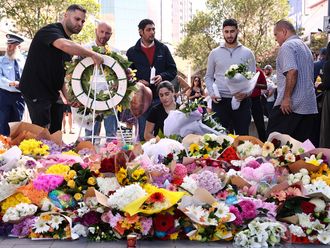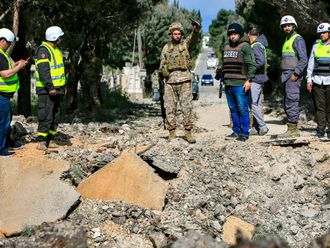Canberra: When the first child dug the first egg out of the sand, the possibilities were endless and not all of them were terrifying.
Maybe . . . a fluffy little chick was inside? That would be cute. Not likely, though. The egg was very small, as were the next 11 that children unearthed that day late last month from the sandpit outside St. Joseph’s Catholic school, on the east coast of Australia.
When volunteers from a wildlife conservation group arrived at the Laurieton-area school, they decided the eggs — 43 by the time they’d finished digging — looked decidedly reptilian.
Still, reptiles can be cute. In fact, the Guardian reported, the volunteers at first thought they might be water dragons: pretty lizards that are sometimes kept as pets and look like they’re smiling.
But when wildlife volunteer Rod Miller shone a light through one of the eggs, the Guardian wrote, he saw no bird or lizard, but a striped baby snake.
Then Miller’s group, Fawna, did a bit more investigating, and announced that these 43 eggs contained the deadliest snakes in Australia.
Eastern brown snakes don’t smile. They can grow more than six feet long, and are one of the most poisonous species in the world. They have killed about two dozen Australians since 2000 — usually when one wanders into someone’s home — and are an increasingly common sight even in cities.
And now Fawna was informing the parents of St. Joseph’s that in another two weeks or so, dozens of brown snakes would have swarmed out of the sand pit.
The group’s volunteers spent three days digging at the school, according to the Camden Courier. They said mummy and daddy brown snakes were probably slithering around the nature reserve behind the sand pit, and took the eggs away.
The volunteers were a little cagey about what they planned to do with the eggs, per the Guardian. It was later revealed that they had reburied them in some nearby bushes. (Fawna is a wildlife conservation group, after all.)
As hatching day approached and the story spread, “snake social media went into meltdown,” as the Guardian put it.
The Daily Mail called the reports “worrying.” The Daily Telegraph adorned its headline with a series of screaming emoji.
“That’s where my kids went to school!!!!” wrote one mother on Facebook.
But soon scepticism crept in.
Bryan Fry, a biologist at the University of Queensland who had at first told the Guardian the eggs were “definitely” of snakes, began to reconsider.
“I reckon they are indeed water dragon eggs,” he said later, noting that lizards have legs to bury with, and snakes do not. A reptile park manager told the Telegraph much the same thing.
The social media crowd began turning against Fawna for crying snake. “Absolutely shonky,” one critic wrote on the group’s Facebook page. “You give all carers a bad name.”
Come the new year, Fawna was forced to put out a series of alternately apologetic and defensive statements about the 43 potential snake eggs.
“Some experts far more experienced than our local handler have pointed out that the eggs can’t be brown snake eggs,” the group wrote Tuesday, according to the Guardian.
But Miller, the Fawna rescuer who first responded to the sand pit, pushed back. With his own eyes, he said, he had seen inside an egg what looked like “a small pink worm with a couple of eyes which I can only think was a snake as it had no limbs.”
“We believe we did the right thing,” Fawna’s president finally told the Telegraph. “We couldn’t tell what the hatchlings were. They could have been pythons, they could have been dragons, they could have been brown snakes.”
She spoke in the past tense. According to the group’s most recent statement, a volunteer returned to the reburial site on Tuesday to inspect the eggs yet again. Whatever they were, they had already hatched.












